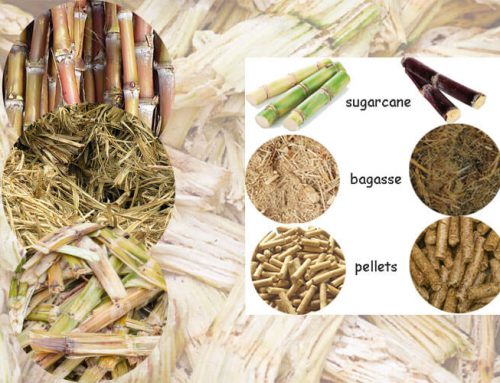Chile Pellet Fuel Production and Market
The long term potential for wood pellet production in Chile is large: the country produces about 40 million cubic meters of industrial round wood, and an additional 16 million cubic meters of firewood, so the sawdust and shaving potential is in theory large. However, these residues are currently utilized to a large extent to produce electricity and heat (as electricity prices are amongst the highest in Latin America). Also, most of the forest assets are owned by the pulp and paper industry which are not enthusiastic about the opportunities to produce pellets yet prefer producing electricity.
In the past years, three wood pellet mills had existed in Chile, but only two of them were operating until a few years ago:
First, the company Ecopellets, established about 6-8 years ago. The theoretical capacity of this plan was about 6 tons/hour, or about 30,000 tons per year. The raw material for this pellet plant is urban waste wood form Santiago. The wood pellets were destined for the domestic market.
Andes biopellets, situated close to Santa Barbaras, belongs to a Swedish investor. It is located next to a saw mill, and uses saw dust as raw material. With an annual production of 50 thousand tons in its first stage, Andes Bio-Pellet is positioned as one of the largest producers of Premium Wood Pellet nationwide. It has the source of raw material from sawmills JCE, giving confidence and security in pellet supply to customers.
The third wood pellet planned is run by Ecomas, a joint venture between the Chilean Company Promasa and the Japanese Somitomo Corporation. The organization has a marketing strategy that involves selling wood pellet boilers to small-scale businesses, and providing them with pellets on long-term contracts. The capacity mentioned by Bioenergy International (2011) was 10,000 tons.
Features of Wood Pellet Plant
The wood crusher (grinder) is equipped with fan and dust collector (cyclone), which can reduce dust effectively during the production.
The drying system is equipped with a boiling furnace. The furnace is fed by a dedicated grinder. The quantity of heat supplied by the boiling furnace is monitored by the thermal probe on the rear-end of furnace.
The drum drying machine is also equipped with thermal probe, making it easy to control the moisture content of discharge materials. The speed of drum dryer, the feeding of crusher and pellet mill are all base on digital control system.
Feedstock for Chile Fuel Pellet Plant
Chile has extensive forests, and these occupy over 20.7% of the country’s total land area. The large areas of pine and eucalyptus plantations in Chile have rendered it a major exporter of paper and wood products to overseas markets. Most Chilean wood products today are being exported as lumber, logs, and chips.
Firewood BTU of Western Hardwood Species
|
Species
|
Million BTU’s per Cord
|
Pounds Per Cord Green
|
Pounds Per Cord Dry
|
|
Douglas Fir
|
26.5
|
5050
|
3075
|
|
Western Juniper
|
26.4
|
5410
|
3050
|
|
Western Hemlock
|
24.4
|
5730
|
2830
|
|
Port Orford Cedar
|
23.4
|
4370
|
2700
|
|
Lodgepole Pine
|
22.3
|
4270
|
2580
|
|
Ponderosa Pine
|
21.7
|
4270
|
2520
|
|
Jeffery Pine
|
21.7
|
4270
|
2520
|
|
Sitka Spruce
|
21.7
|
4100
|
2520
|
|
White Fir
|
21.1
|
3190
|
2400
|
|
Red Fir
|
20.6
|
4040
|
2400
|
|
Incense Cedar
|
20.1
|
3880
|
2350
|
|
Coast Redwood
|
20.1
|
4040
|
2330
|
|
Grand Fir
|
20.1
|
3880
|
2330
|
|
Sugar Pine
|
19.6
|
3820
|
2270
|
Domestic Market and Opportunity Costs
Timber industry in Brazil was paying in December 2006 about 34 Euro/t for ordinary logs able to be sawn (pine and eucalypt). Wood chips market for pulp and paper production from abroad (Japan, USA) is also an attractive option for biomass. In fact, recently the largest Brazilian wood chips plant (including plantations), strategically located in the State of Amapá, was sold to the Japanese groups Marubeni Corporation and Nippon Paper Industries (CEPEA, 75(120) 2007). The plant is able to produce about 1 million tonnes of wood chips per year, amount that was also sold to Europe in 2004 and 2005 for energy purposes. As of December 2006, domestic market paid 20-24 Euro/t (CIF industry) for pulp production (CEPEA, 2007). Furniture, construction and
charcoal production keep wood biomass prices under competition with most of other alternative uses, as well as pulp and paper industry does. Thus, forestry and timber residues appear to be the best economical option for pellet production. Production costs for these residues at about 18.5 Euro/t referred by Dolzan & Walter (2007) are coherent with firewood average market price at 21.2 Euro/t (margin included) (CEPEA, 2007).
Trends and prices
For Chile and other countries located at the Pacific Coast, market for pellets in Asia/Japan remains unknown, differently than the existing for wood chips/pulp production (Campino, 2007).
The United States may become an option depending on the future policies for renewable. However, Canada is one of the largest pellet exporters, and it may supply US market at competitive prices. Looking at the European market, pellets from Chile will have to confront the additional freight cost distance plus the Panama Canal toll.
We have successfully installed wood pellet plant for our customer in Chile. This plant is designed for pelletizing the mixture of pine wood and eucalyptus wood materials. The actual output of this pellet production line is 1ton per hour. If you are interested in this solution, please send email to info@azeuspelletmill.com, we will send you more information about the project.









Leave A Comment